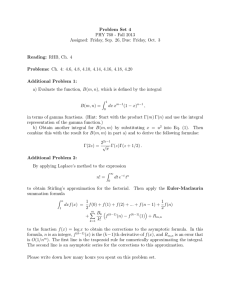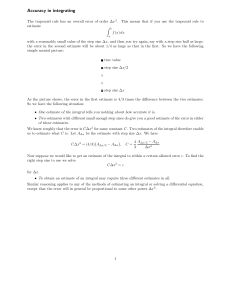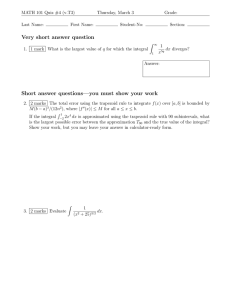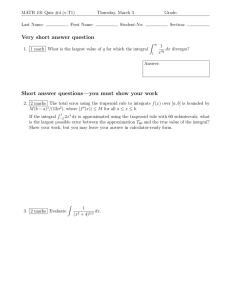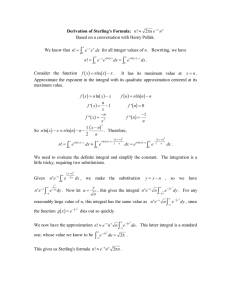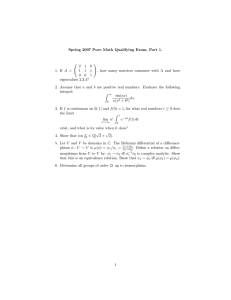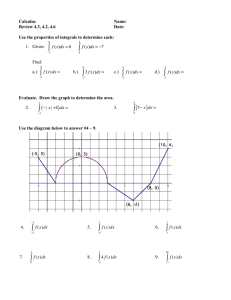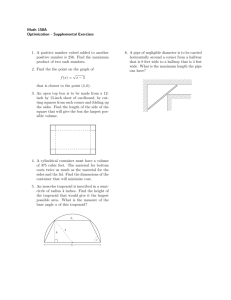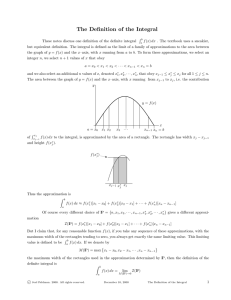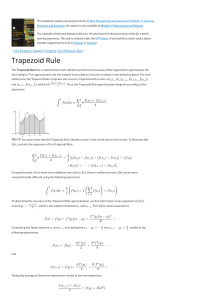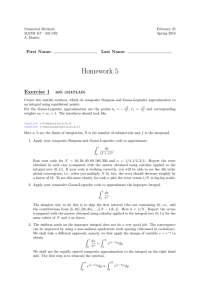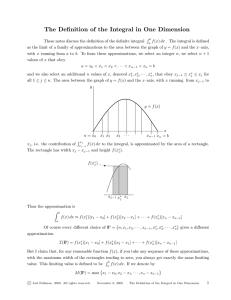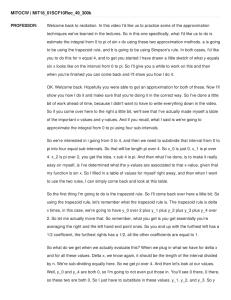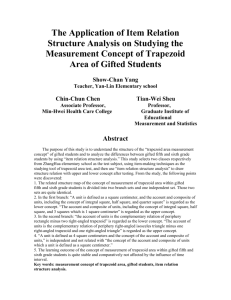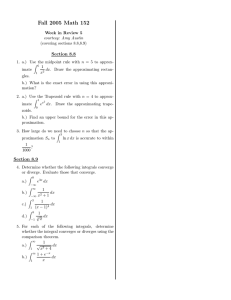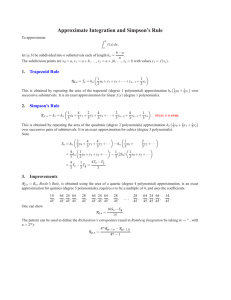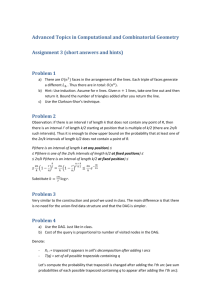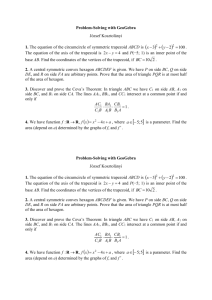Composite Trapezoid Rule
advertisement
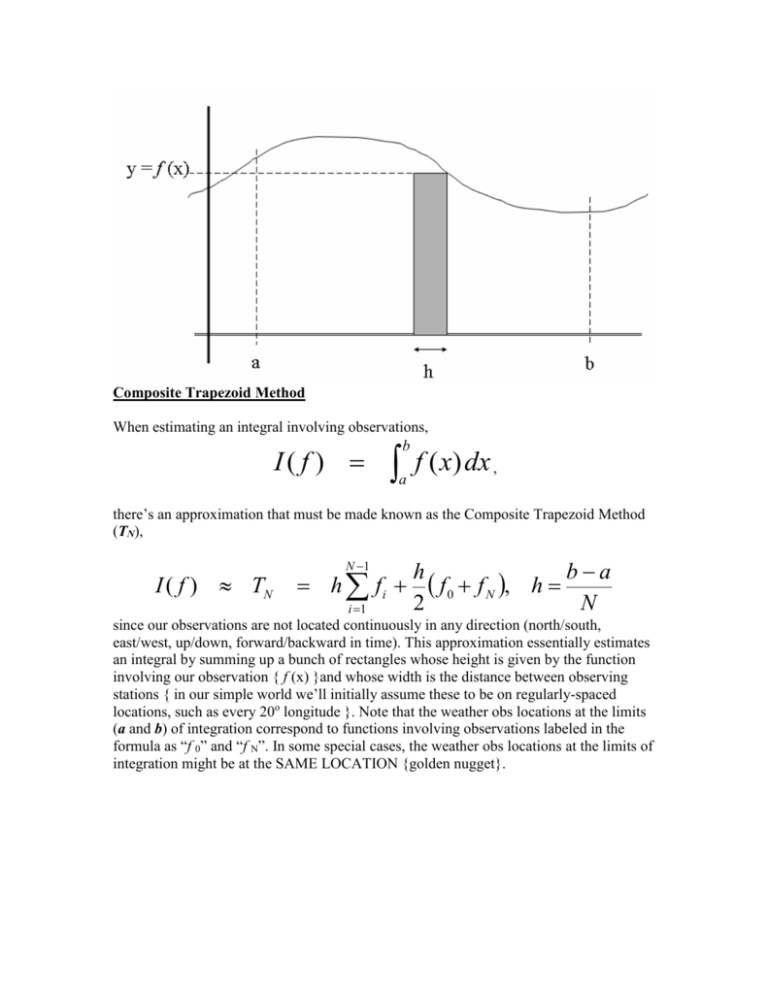
Composite Trapezoid Method
When estimating an integral involving observations,
b
I( f )
a
f ( x) dx ,
there’s an approximation that must be made known as the Composite Trapezoid Method
(TN),
I ( f ) TN
N 1
h fi
i 1
h
f0 f N , h b a
2
N
since our observations are not located continuously in any direction (north/south,
east/west, up/down, forward/backward in time). This approximation essentially estimates
an integral by summing up a bunch of rectangles whose height is given by the function
involving our observation { f (x) }and whose width is the distance between observing
stations { in our simple world we’ll initially assume these to be on regularly-spaced
locations, such as every 20o longitude }. Note that the weather obs locations at the limits
(a and b) of integration correspond to functions involving observations labeled in the
formula as “f 0” and “f N”. In some special cases, the weather obs locations at the limits of
integration might be at the SAME LOCATION {golden nugget}.

